- Sep 22, 2013
- 4,956
- 250
- 85
Does capitalism remind you of a crusade?
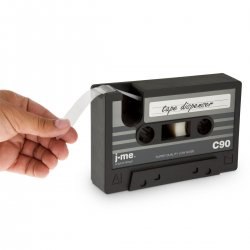
====
Angels of heaven descended to praise the modern fascination with consumerism-creativity (e.g., Starbucks, Toys 'R Us, Apple Computers, Sony PlayStation, Marvel Comics, etc.). Starbucks logos became bumper stickers for chic café-sitting modern college students in Oxford, Miami, Sydney, Stanford, Georgetown, and Duke. This was 'Yin-Yang Capitalism' because there was the light of commercial peace and the darkness of ruthless Wall Street activity. Was there a Starbucks Demon Tree?
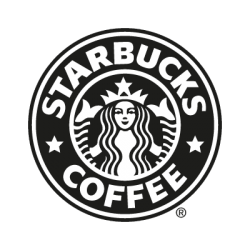
Americans loved consumerism iconic 'tokens' such as vintage 1980s compact cassettes and 1990s JVC CD-player stereos. These 'trophies' of capitalism reminded the everyday shopper that fashion and brand-marketing associated with unlimited global trade created a special 'contract aesthetics' consciousness (e.g., WikiLeaks, Amazon.com, eBay seller-ratings, etc.). Suddenly, reliable access to convenience-based markets (e.g., NASDAQ) was analogous to civilization blood-pressure. There were of course therefore both great white sharks and killer-whales.
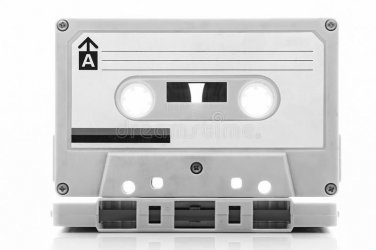
American hippies were exploring alternative philosophies and indulging in fairy-tale folklore so we saw a resurgence in the popularity of Eastern philosophies (e.g., Shaivism/Hinduism) and Peter Pan films. This was a primal backlash in response to Wall Street claustrophobia and L.A. smog. Consumers wanted to go to underground 'rave parties' and dance to 'electronica music' all night long to forget about their Orwellian fears of the networked future (i.e., World Wide Web). Comic book super-villains such as Venom and Black Cat were symbolic of a new age 'sanity dualism' (e.g., patriotism/vigilantism).
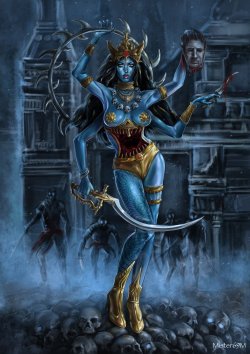
American sci-fi action-adventure film-makers such as Michael Bay and James Cameron presented outlandish futuristic 'beings' such as giant A.I. robot-warriors called Transformers and a 'race' of super-machine soldiers (some comprised entirely of a malleable liquid-mercury like substance) called Terminators. These strange futuristic 'soldiers' represented some of the raw ambition of modern capitalism and the theory that civilization evolution goes hand-in-hand with unlimited social deviance fears.
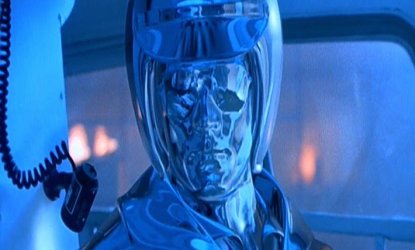
American comic books were being adapted into countless big-budget and/or high-profile Hollywood (USA) films such as The Dark Knight, Black Panther, Catwoman, Bloodshot, and Marvel's Avengers. Was this because everyday people were concerned about the underworld profit-piracy networks such as gothic drug-world empires in South America, Florida, and Moscow? Capitalism benefitted all kinds of 'investors' so the angels of heaven evaluated all this civilization symbolism almost as if they were archaeologists. It felt like evil was somehow...sane (since capitalism promoted 'irresistible competitiveness').

Alien: Covenant was the new rage, a sci-fi horror-franchise prequel about human space-explorers engaging with a modern Godzilla called the Xenomorph. The film was being hailed as truly symbolic of new age Orwellian fears regarding the ugliness of evolution weighed against the endless black-oil competitiveness of capitalism. The Trump Administration claimed this was all in service to the 'gods of shared wealth.'
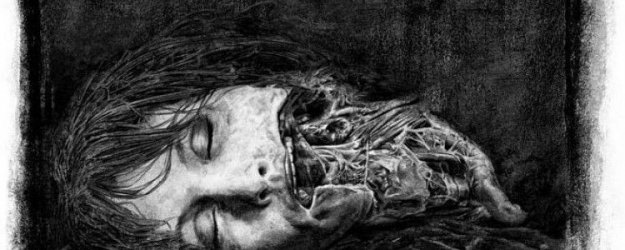
Angels of Satan, the adversary of civilization, painted Eve as a paragon of seduction, making her the key to opening up the apocalyptic hellmouth of carnality in the age of convenience. Burger King was cholesterol only and hence simply crude, but Wall Street created a strange species-blanketing piracy-consciousness, so sharkish behaviour was for the first time 'intelligent.' Commerce changed the way sociologists used the word 'piracy.' Was the mysterious Harlot of Babylon about to ascend on the laurels of the emerged AntiChrist? After all, Americans were hypnotized by luxury-meditation films such as Celebrity, Casino, and Capote.
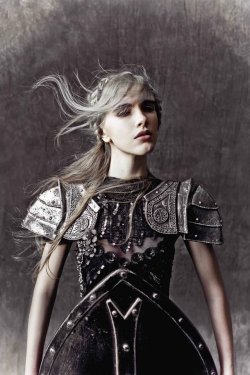
American kids purchased clear-plastic water-rifles for the summer in defiance of post-Industrialization eco-pollution, and perhaps Jesus would return at the time of Revelation to defy the lustre of games of dice and fortune-hunting. Water-guns did symbolize youthful optimism towards the marketing of modern toys. However, laziness threatened this energy, since consumers sat at home and surfed TV channels with remote-controls powered by very popular batteries such as Duracell and Energizer. Even toys were somewhat...predictable.

American photojournalists working for National Geographic took snapshots of comparative cultural development in the age of commercial networking and globalization. Would natives of Africa and Alaska and Australia be excited to participate in this new NASDAQ/eBay world? Would they consider the sale of millions of 'smartphones' as somehow mindless? Where was the ritual of democracy?

An ancient Mugal emperor built a white-marble tomb for his wife which is now known as the great Taj Mahal in Agra (India). However, this emperor also wanted a replica black-marble tomb to be built right across the white-marble Taj Mahal, but it was never built, since he was imprisoned by his own betraying and extremely-ambitious (and unruly!) son. The world was therefore robbed of a precious archaeological marvel all thanks to the vices of power struggles in an emerging humanity completely reoriented towards fame...
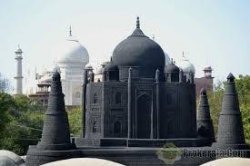
American female sorority members at various colleges/universities such as Georgetown, Florida State, UPenn, Caltech, UCSD, and Notre Dame celebrated all this 'ambition pageantry' by expressing behaviors symbolic of 'populism idealism' (since commerce and Internet-networking promoted friendship-circles!). They watched Cheers on TV, wore Halloween costumes of superheroines and anti-heroines such as Supergirl and Dark Supergirl at sorority-fraternity autumn parties, and talked about the censorship of immigration controversies in modern America. The angels of heaven were arrayed finally against the angels of Satan for a climactic battle of imagination.
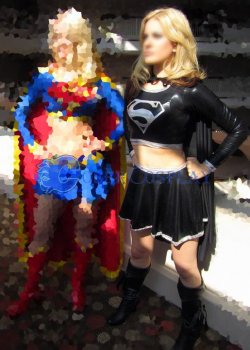
American comic book artists created representations of superheroes contending with super-villains in ways that captured this new age social fascination with Yin-Yang Capitalism. In fact, the dualism created in commerce between piracy and daydreams reminded people why crime could potentially become 'marketable.' Was villainy a form of folklore now? Was Gordon Gekko the new Rhett Butler? Spider-Man believed he could destroy the notion of Venom (his nemesis) that capitalism and modern society reminded humans of furious ambition only.
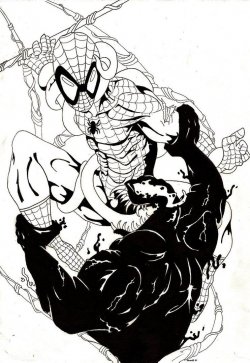
GOD: My archangel Michael has defeated your rebellious angels...
SATAN: Well, they made a movie about Michael (starring John Travolta).
GOD: You see? Even God is somewhat of a 'celebrity.'
SATAN: You're a keen lawyer; I'm surprised, but do you fear anarchy?
GOD: Capitalism is dualism only; the Sin of the Harlot of Babylon is measured.
SATAN: She's merely a messenger of free-will.
GOD: Pornography is not the same as journalism...
SATAN: You're so boring!
GOD: I know consumerism is 'regular' but that promotes education.
SATAN: So you want stockbrokers to be more imaginative (how?)?
GOD: There is creativity everywhere!
SATAN: There is also capitalism-driven warfare (e.g., America-Iraq).
GOD: The Gulf War reminded us of American leadership (arguably).
SATAN: Arguably(!)? So there is doubt...
GOD: For every harlot, there is a faithful nurse reminding us of pity.
SATAN: There is little pity sometimes in Wall Street.
GOD: I prefer patriotism to graffiti.
SATAN: So I suppose political cartoons are merely graffiti?
GOD: Where there is capitalism-criticism, there are also genius lawyers...
SATAN: Let's agree that Celebrity is a cool movie.

====



====
Angels of heaven descended to praise the modern fascination with consumerism-creativity (e.g., Starbucks, Toys 'R Us, Apple Computers, Sony PlayStation, Marvel Comics, etc.). Starbucks logos became bumper stickers for chic café-sitting modern college students in Oxford, Miami, Sydney, Stanford, Georgetown, and Duke. This was 'Yin-Yang Capitalism' because there was the light of commercial peace and the darkness of ruthless Wall Street activity. Was there a Starbucks Demon Tree?

Americans loved consumerism iconic 'tokens' such as vintage 1980s compact cassettes and 1990s JVC CD-player stereos. These 'trophies' of capitalism reminded the everyday shopper that fashion and brand-marketing associated with unlimited global trade created a special 'contract aesthetics' consciousness (e.g., WikiLeaks, Amazon.com, eBay seller-ratings, etc.). Suddenly, reliable access to convenience-based markets (e.g., NASDAQ) was analogous to civilization blood-pressure. There were of course therefore both great white sharks and killer-whales.

American hippies were exploring alternative philosophies and indulging in fairy-tale folklore so we saw a resurgence in the popularity of Eastern philosophies (e.g., Shaivism/Hinduism) and Peter Pan films. This was a primal backlash in response to Wall Street claustrophobia and L.A. smog. Consumers wanted to go to underground 'rave parties' and dance to 'electronica music' all night long to forget about their Orwellian fears of the networked future (i.e., World Wide Web). Comic book super-villains such as Venom and Black Cat were symbolic of a new age 'sanity dualism' (e.g., patriotism/vigilantism).

American sci-fi action-adventure film-makers such as Michael Bay and James Cameron presented outlandish futuristic 'beings' such as giant A.I. robot-warriors called Transformers and a 'race' of super-machine soldiers (some comprised entirely of a malleable liquid-mercury like substance) called Terminators. These strange futuristic 'soldiers' represented some of the raw ambition of modern capitalism and the theory that civilization evolution goes hand-in-hand with unlimited social deviance fears.

American comic books were being adapted into countless big-budget and/or high-profile Hollywood (USA) films such as The Dark Knight, Black Panther, Catwoman, Bloodshot, and Marvel's Avengers. Was this because everyday people were concerned about the underworld profit-piracy networks such as gothic drug-world empires in South America, Florida, and Moscow? Capitalism benefitted all kinds of 'investors' so the angels of heaven evaluated all this civilization symbolism almost as if they were archaeologists. It felt like evil was somehow...sane (since capitalism promoted 'irresistible competitiveness').
Alien: Covenant was the new rage, a sci-fi horror-franchise prequel about human space-explorers engaging with a modern Godzilla called the Xenomorph. The film was being hailed as truly symbolic of new age Orwellian fears regarding the ugliness of evolution weighed against the endless black-oil competitiveness of capitalism. The Trump Administration claimed this was all in service to the 'gods of shared wealth.'

Angels of Satan, the adversary of civilization, painted Eve as a paragon of seduction, making her the key to opening up the apocalyptic hellmouth of carnality in the age of convenience. Burger King was cholesterol only and hence simply crude, but Wall Street created a strange species-blanketing piracy-consciousness, so sharkish behaviour was for the first time 'intelligent.' Commerce changed the way sociologists used the word 'piracy.' Was the mysterious Harlot of Babylon about to ascend on the laurels of the emerged AntiChrist? After all, Americans were hypnotized by luxury-meditation films such as Celebrity, Casino, and Capote.

American kids purchased clear-plastic water-rifles for the summer in defiance of post-Industrialization eco-pollution, and perhaps Jesus would return at the time of Revelation to defy the lustre of games of dice and fortune-hunting. Water-guns did symbolize youthful optimism towards the marketing of modern toys. However, laziness threatened this energy, since consumers sat at home and surfed TV channels with remote-controls powered by very popular batteries such as Duracell and Energizer. Even toys were somewhat...predictable.

American photojournalists working for National Geographic took snapshots of comparative cultural development in the age of commercial networking and globalization. Would natives of Africa and Alaska and Australia be excited to participate in this new NASDAQ/eBay world? Would they consider the sale of millions of 'smartphones' as somehow mindless? Where was the ritual of democracy?

An ancient Mugal emperor built a white-marble tomb for his wife which is now known as the great Taj Mahal in Agra (India). However, this emperor also wanted a replica black-marble tomb to be built right across the white-marble Taj Mahal, but it was never built, since he was imprisoned by his own betraying and extremely-ambitious (and unruly!) son. The world was therefore robbed of a precious archaeological marvel all thanks to the vices of power struggles in an emerging humanity completely reoriented towards fame...

American female sorority members at various colleges/universities such as Georgetown, Florida State, UPenn, Caltech, UCSD, and Notre Dame celebrated all this 'ambition pageantry' by expressing behaviors symbolic of 'populism idealism' (since commerce and Internet-networking promoted friendship-circles!). They watched Cheers on TV, wore Halloween costumes of superheroines and anti-heroines such as Supergirl and Dark Supergirl at sorority-fraternity autumn parties, and talked about the censorship of immigration controversies in modern America. The angels of heaven were arrayed finally against the angels of Satan for a climactic battle of imagination.

American comic book artists created representations of superheroes contending with super-villains in ways that captured this new age social fascination with Yin-Yang Capitalism. In fact, the dualism created in commerce between piracy and daydreams reminded people why crime could potentially become 'marketable.' Was villainy a form of folklore now? Was Gordon Gekko the new Rhett Butler? Spider-Man believed he could destroy the notion of Venom (his nemesis) that capitalism and modern society reminded humans of furious ambition only.

GOD: My archangel Michael has defeated your rebellious angels...
SATAN: Well, they made a movie about Michael (starring John Travolta).
GOD: You see? Even God is somewhat of a 'celebrity.'
SATAN: You're a keen lawyer; I'm surprised, but do you fear anarchy?
GOD: Capitalism is dualism only; the Sin of the Harlot of Babylon is measured.
SATAN: She's merely a messenger of free-will.
GOD: Pornography is not the same as journalism...
SATAN: You're so boring!
GOD: I know consumerism is 'regular' but that promotes education.
SATAN: So you want stockbrokers to be more imaginative (how?)?
GOD: There is creativity everywhere!
SATAN: There is also capitalism-driven warfare (e.g., America-Iraq).
GOD: The Gulf War reminded us of American leadership (arguably).
SATAN: Arguably(!)? So there is doubt...
GOD: For every harlot, there is a faithful nurse reminding us of pity.
SATAN: There is little pity sometimes in Wall Street.
GOD: I prefer patriotism to graffiti.
SATAN: So I suppose political cartoons are merely graffiti?
GOD: Where there is capitalism-criticism, there are also genius lawyers...
SATAN: Let's agree that Celebrity is a cool movie.
====

